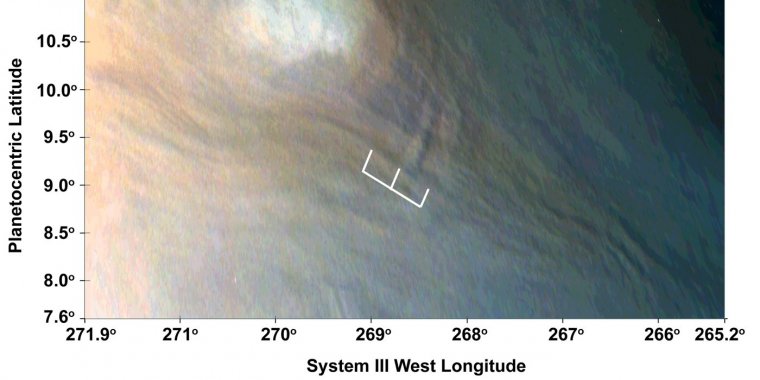| News / Space News |
NASA's Juno Mission Detects Jupiter Wave Trains
Massive structures of moving air that appear like waves in Jupiter's atmosphere were first detected by NASA's Voyager missions during their flybys of the gas-giant world in 1979.

Three waves can be seen in this excerpt of a JunoCam image taken on Feb. 2, 2017, during Juno's fourth flyby of Jupiter. The region imaged in this picture is part of the visibly dark band just north of Jupiter's equator known as the North Equatorial Belt. Image credit: NASA/JPL-Caltech/SwRI/MSSS/JunoCam
JunoCam data has detected atmospheric wave trains, towering atmospheric structures that trail one after the other as they roam the planet, with most concentrated near Jupiter's equator.
The JunoCam imager has resolved smaller distances between individual wave crests in these trains than ever seen before. This research provides valuable information on both the dynamics of Jupiter's atmosphere and its structure in the regions underneath the waves.
Most of the waves are seen in elongated wave trains, spread out in an east-west direction, with wave crests that are perpendicular to the orientation of the train. Other fronts in similar wave trains tilt significantly with respect to the orientation of the wave train, and still other wave trains follow slanted or meandering paths.
Although analysis is ongoing, most waves are expected to be atmospheric gravity waves - up-and-down ripples that form in the atmosphere above something that disturbs air flow, such as a thunderstorm updraft, disruptions of flow around other features, or from some other disturbance that JunoCam does not detect.
JunoCam is a color, visible-light camera which offers a wide-angle field of view designed to capture remarkable pictures of Jupiter's poles and cloud tops. (NASA)
YOU MAY ALSO LIKE


